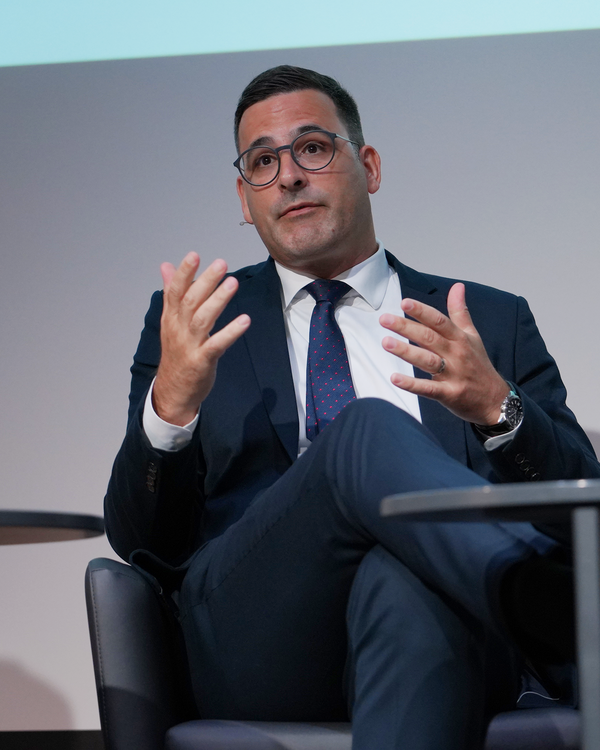CO2 reduction in the CHF portfolio - squaring the circle?
Zürcher Kantonalbank Asset Management also manages Swiss equity, bond and property investments. Due to the special characteristics of the domestic market, however, it is challenging to provide CHF portfolios with a continuous path to reduce greenhouse gases. These are the reasons why.

Most actively managed Swisscanto investment products (investment funds and investment groups) in the "Responsible" and "Sustainable" product lines are subject to a CO2 reduction path. This means that the CO2e emissions of a portfolio must fall by at least 4 per cent annually. However, applying the CO2 reduction path to a pure CHF portfolio is associated with several challenges.
This applies, for example, to sustainable investment products that invest primarily in large-cap Swiss companies. In terms of CO2e intensity, these companies have a vastly different profile compared to cement manufacturer Holcim. Cement production is very energy-intensive. Holcim therefore has a CO2e intensity of 2,722 tonnes of CO2e per one million turnover (in USD). This is nearly five times more than the CO2e intensity of the next closest company, Vetropack Holding. Holcim alone is responsible for 82 per cent of the CO2e intensity of the entire Swiss Performance Index (SPI) (as at March 2024). The SPI comprises around 210 stocks, while Holcim's weighting is just 2.8 per cent.

Simple and difficult at the same time
Due to Holcim's large carbon footprint, a slight underweighting of Holcim at portfolio level in a portfolio of Swiss large-cap equities or Swiss bonds can lead to a significant reduction in CO2 emissions. At the same time, however, it is almost impossible to overweight the share.
This is unfortunate, as the company has introduced various reduction measures and is having its targets reviewed by the Science Based Target Initiative. For example, Holcim aims to reduce CO2 emissions per tonne of cement by 22 per cent by 2030 compared to the base year 2018. By 2022, Holcim has achieved a reduction of 4.8 per cent. In 2022, Holcim also divested assets in India and Brazil, resulting in a total reduction in intensity of 37 per cent in 2022 compared to 2021.
In a global and regional context, an allocation decision can be made based on the higher diversification within a peer group. This means that companies such as Holcim are overweighted and cement companies without a transition plan and with higher intensities are underweighted. However, this option is not available in the Swiss investment universe, as there is no second cement manufacturer.
Small universe of Swiss small- & mid-caps
Swiss small and mid caps also face challenges. The SPI Extra includes around 190 stocks. However, a good half of these are less liquid. In fact, there are only around 90 stocks available that are sufficiently liquid for investment.
If the portfolio now follows a CO2 reduction path based on the Paris Climate Agreement, difficulties may arise in the medium term. This is because the CO2 intensity of these companies is already very low. In addition, the dispersion of CO2e intensities, i.e. the differences in CO2 emissions between the various companies, is less pronounced in the small- & mid-cap segment than in large companies. The opportunities for CO2 reduction through stock selection are therefore limited. In order to achieve the defined climate targets, it is therefore necessary to rely primarily on market-driven CO2e reduction contributions. The fact is, however, that the decarbonisation of the global economy is progressing too slowly. This is one of the reasons why we have switched from the <2-degree target to a relative CO2e reduction approach for Swisscanto investment products focusing on Swiss small- & mid-caps.
There is also a limited choice in indirect Swiss property investments. In this asset class, we invest in both listed property companies and collective property vehicles. The investment universe comprises around 15 to 20 listed property companies and around 100 collective vehicles. As these collective vehicles are predominantly managed by third parties, Zürcher Kantonalbank's asset management has no direct influence onCO2e reduction. For this reason, we have not defined a <2° target for this active responsible strategy from the outset, but rather an ongoing CO2e reduction without a quantitative target.
More room for manoeuvre thanks to Scope 3 and 4?
The introduction of Scope 3 data may give portfolio managers more room for manoeuvre to continuously reduce the CO2e intensity in a portfolio. Scope 3 accounting is more comprehensive and may allow for better differentiation between sectors. However, the accounting method can also lead to some undesirable results.
Scope 4 data should also be included so that providers of CO2e-efficient products and services are not systematically penalised. Scope 4 emissions are avoided emissions resulting from the use or deployment of low-carbon or low-emission products, services or technologies. Unfortunately, the availability of data is still very limited.
Our next blog will take a closer look at the challenges and opportunities of Scope 3 and Scope 4 data.


